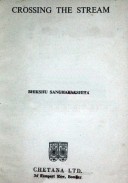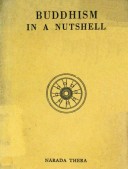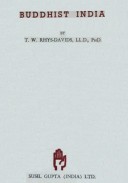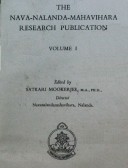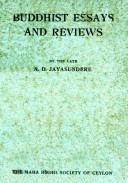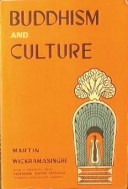Tìm Sách
Sách tiếng Anh-English >> Crossing The Stream
Thông tin tra cứu
- Tên sách : Crossing The Stream
- Tác giả : Bhikshu Sangharakshita
- Dịch giả :
- Ngôn ngữ : Anh
- Số trang : 73
- Nhà xuất bản : Chetana Ltd. Bombay
- Năm xuất bản : 1960
- Phân loại : Sách tiếng Anh-English
- MCB : 1210000003449
- OPAC :
- Tóm tắt :
Crossing The Stream
FOREWORD
The present volume consists of editorials written for the Buddhist Journal Stepping-Stones published in Kalimpong, West Bengal. The author, Ven. Bhikshu Sangharakshita, was an English soldier serving in South-East Asia during the 1939-45 war. When hostilities ceased he abandoned the ‘household’ state to lead the life of a homeless wanderer in search of the Truth.
Journeying from Singapore he passed through Madras, Malabar and Mysore State, then proceeded on foot from Benares to Saranath, Kusinara (where he received his pabbajja ordination in May 1949), Lumbini and Tansen. At the beginning of 1950 he made a foot-tour of Buddhist holy places in Bihar, including Rajgir and Nalanda; Buddha Gaya he had previously visited. Arriving in Kalimpong in March 1950, the Ven. Bhikshu founded the Young Men’s Buddhist Association in May and the Journal Stepping-Stones in July. He received the upasampada or Higher Ordination in November of the same year at Saranath. Since January 1954 he has edited the Maha Bodhi Journal.
Ven. Bhikshu Sangharakshita is now settled at Kalimpong. In 1957 he met the Dalai Lama and founded the Triyana Vardhana Vihara which is dedicated to the comparative study of all schools of Buddhism.
The present Editorials constitute no heavy doctrinal treatise. They indicate the road along which one may pass from strife to perfect peace. The basic aim of man, his activities, their identification, the mutual interpenetration of all things, the consequent realisation of things as they really are and not as, in varying states of consciousness, they seem to be – all these are shown in their relation to the central fact of the Buddhist Teaching, namely the Enlightenment of the Buddha. The aspects of Buddhism as a practical religion, never demanding a blind faith, its relation to the duties of everyday life, its power of liberating the creative force in man, are the subjects of discourse in a form more intimate than that of an ‘article’, more spontaneous than a dogmatic treatise could be. For this reason the work represents the spirit of Buddhism rather than formal instruction, and is therefore of value to persons searching for the inspiration by which to live as well as to those who have already some knowledge of the Buddhist Teachings.
A. A. G. Bennett
CONTENTS
Foreword
Author’s Note
- Stepping-Stones
- The Dharma in the Land of Gautama
- The Voice Within
- Orthodoxy
- Unity
- Rights and Duties
- Everything That Lives is Holy
- Living in the Present
- The Problem of Desire
- The Good Friend
- The Middle Way
- Wholeness and Holiness
- Desire for the Eternal
- Enlightenment
- Parable of the Raft
- Awakening of the Heart
- The Simple Life
- ‘Pauses’ and ‘Empty Spaces’
- An Old Saw Re-sharpened
- A ‘Buddhist Bible’?
- Autumn Thoughts
 Facebook
Facebook
 Google
Google
 Google+
Google+
